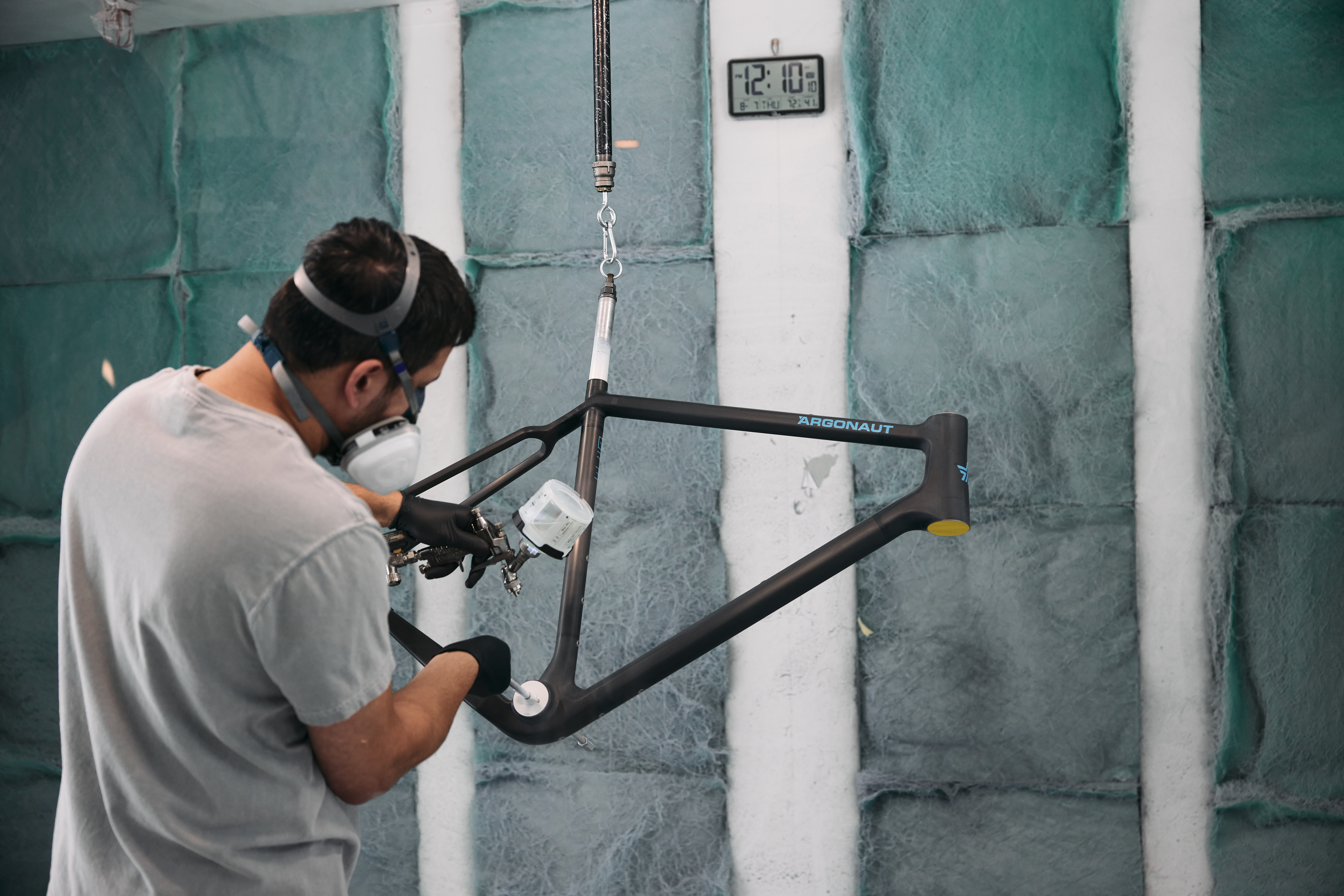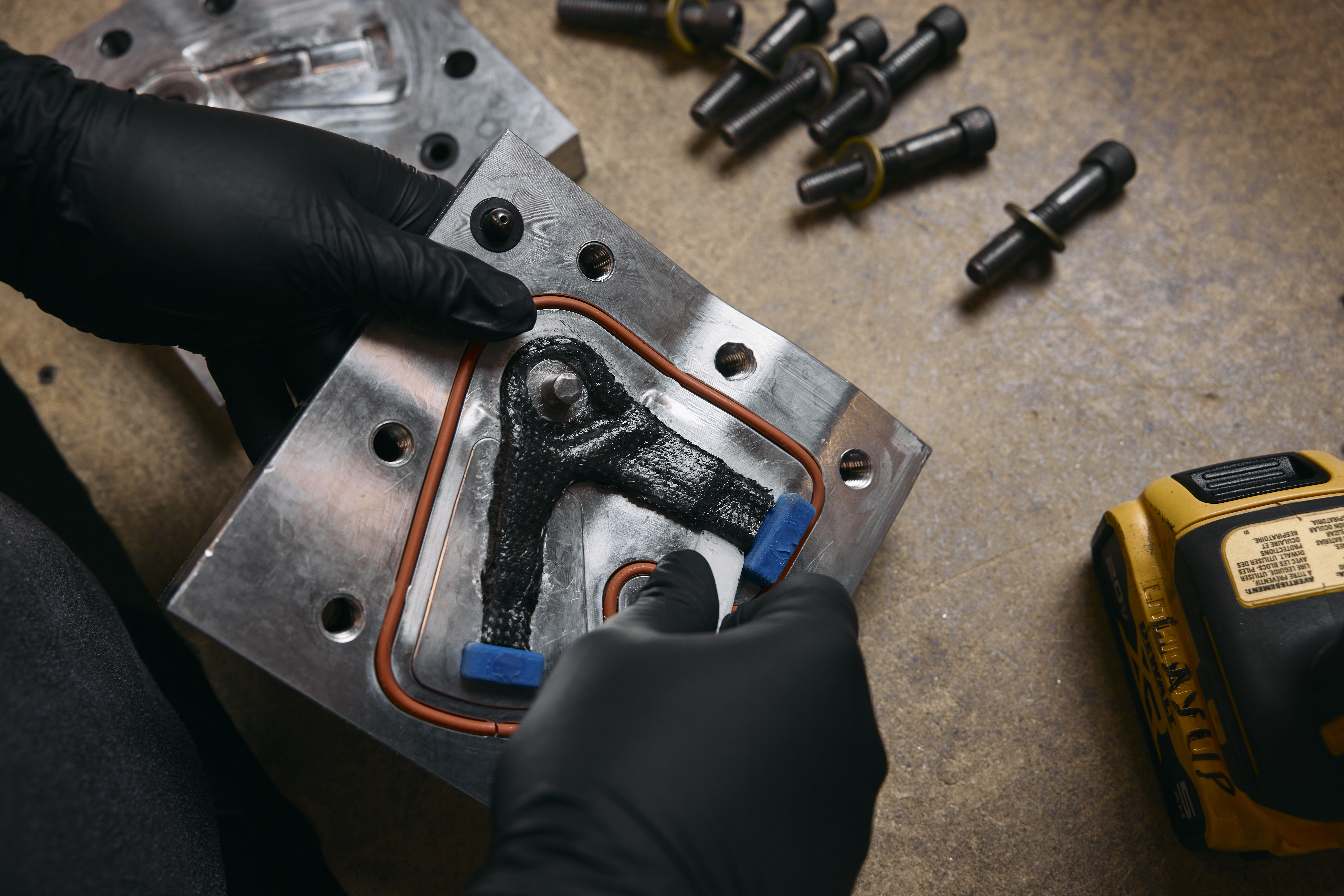There's a moment in October when the roads change. The light falls lower through the trees, casting long shadows across gravel that's been baked dry all summer. The air carries weight now, cool and dense, and your bike becomes more than a machine—it becomes the interface between intention and terrain. You feel everything: the way the frame absorbs chatter, the precision with which it holds a line through loose corners, the balance between compliance and response that lets you ride harder, longer, without fatigue accumulating in your hands and shoulders.
What you're feeling isn't magic. It's engineering. But here's what most riders don't know: that feeling—that seamless translation of effort into forward motion—depends entirely on what's happening inside the carbon itself, in the molecular spaces between fibers where resin flows during the cure cycle.

The myth is simple and pervasive: carbon fiber needs filler. The reasoning follows a certain logic—if there are gaps or voids in the laminate after molding, fill them. Sand down the high spots, smooth out the surface, make it look clean. The problem is that this approach treats the symptom, not the cause. Low compaction rates during the cure process create those voids in the first place. When pressure isn't sufficient, resin pools unevenly. Plies shift. The interior surface becomes inconsistent, porous, compromised. So manufacturers compensate—extra material here, filler there, surface work to hide what's underneath. The result is a frame that looks finished but rides unpredictably, because the structure itself is fundamentally imprecise.
This is where intention diverges from execution. At Argonaut, we don't fill gaps because we don't create them. We use high-pressure silicon molding—a process that applies uniform, sustained force across the entire laminate during the cure. The pressure is significant, measured and controlled, and the result is complete compaction. Every ply stays exactly where it was placed. The resin saturates fully, without pooling or voiding. The interior surface emerges flawless, not because it's been corrected afterward, but because it was formed correctly from the beginning.
This matters more than aesthetics. When compaction is total, the structural behavior of the frame becomes predictable and repeatable. We can tune each ply orientation with precision—zero-degree fibers for longitudinal stiffness, off-axis weaves for torsional control, aramid integration in high-stress zones for impact resistance without adding weight. The layup doesn't just exist in theory; it performs exactly as designed because the material itself is stable, dense, uncompromised. There's no guesswork, no compensation, no post-process correction masking underlying inconsistency.

The Supernaut makes this tangible. It's our most direct expression of what high-pressure molding enables—a frame that rides with visceral clarity, where every input translates cleanly into response. On gravel, where surfaces shift constantly and line choice matters, you feel the difference immediately. The bike absorbs what it should and transmits what it must, with no harshness, no dead spots, no interference. It doesn't fight you through rough sections or go vague in fast corners. It holds tension without stiffness, complies without slackness, and the ride quality remains consistent whether you're on mile five or mile fifty.
This is what precision feels like. Not the absence of sensation, but the absence of noise—structural, mechanical, or otherwise. The frame becomes transparent to your effort, and what remains is the road, the light through the trees, the way October air feels against your face when you're moving fast enough to leave everything else behind. That's not marketing. That's physics, executed without compromise. And it's why we build the way we do—whether it's the Supernaut RM3 or GR3. Because performance isn't what sounds impressive in a specification. It's what happens when engineering becomes invisible and the open road is all that's left.
Which Supernaut is right for you ?

Supernaut RM3 .

Supernaut GR3 .
Pick three.
